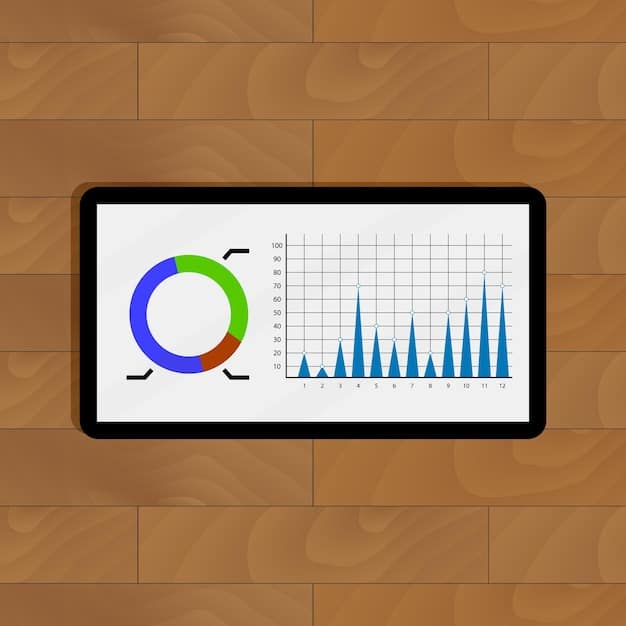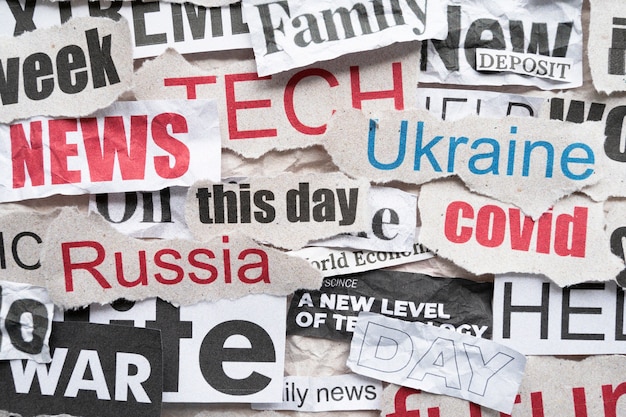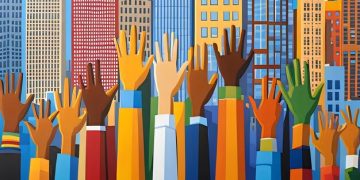The Social Commentary Divide: Data Interpretation in National Debates

The Social Commentary Divide: How Differing Interpretations of Data are Shaping National Debates highlights how varying perspectives on data influence public discourse, impacting policy decisions and fueling societal divisions in the United States.
The United States is increasingly defined by its **The Social Commentary Divide: How Differing Interpretations of Data are Shaping National Debates**. This divide isn’t merely about disagreeing on facts, but how different groups interpret the same data, leading to vastly different conclusions and policy preferences.
Understanding the Data Interpretation Gap
The interpretation of data has become a significant battleground in modern social commentary. It’s no longer enough to simply present statistics; understanding the biases and perspectives that shape how data is understood is crucial.
This section explores the fundamental reasons behind the data interpretation gap, examining the cognitive and social factors that influence how individuals and groups process information.
Cognitive Biases and Data Perception
Our brains are wired with inherent biases that affect how we perceive and interpret information. Confirmation bias, for example, leads us to favor data that confirms pre-existing beliefs.
Understanding these biases is crucial in navigating the social commentary divide. Here’s an overview of some key biases:
- Confirmation Bias: The tendency to seek out and interpret information that confirms existing beliefs, while ignoring contradictory evidence.
- Availability Heuristic: Overestimating the importance of information that is readily available or easily recalled, often due to recent or emotionally charged events.
- Anchoring Bias: Relying too heavily on the first piece of information received (the “anchor”) when making decisions or interpretations, even if that information is irrelevant.
- Framing Effect: Drawing different conclusions from the same information, depending on how that information is presented or framed.
These cognitive biases aren’t flaws, but rather shortcuts our brains use to process information quickly. However, they can lead to skewed interpretations of data, especially when complex social issues are involved.
The Role of Media in Amplifying Division
Media outlets play a critical role in shaping public opinion by curating and presenting information, including data. However, the increasing polarization of media landscapes often amplifies existing divisions.
Different news sources may emphasize different aspects of the same data or frame it in ways that align with their particular ideological leanings.

Selective Reporting and Framing
Media outlets often engage in selective reporting, choosing which data points to highlight and which to downplay. They may also use framing techniques to influence how audiences interpret the data.
For instance, a news outlet that wants to paint a positive picture of the economy might emphasize job growth while downplaying inflation. Conversely, an outlet with a more negative outlook might focus on rising prices while ignoring employment gains.
Furthermore, the language used to describe data can significantly impact its perception. Terms like “soaring” or “plummeting” can evoke emotional responses and sway public opinion, regardless of the underlying numbers.
The media’s role in amplifying division underscores the importance of critical media literacy. Consumers should be aware of the potential biases of different news sources and seek out a variety of perspectives to form their own informed opinions.
Political Polarization and Data-Driven Narratives
Political polarization has become a defining feature of American society, and data is often weaponized to support partisan narratives.
Politicians and advocacy groups may selectively use data to bolster their arguments, even if the data is incomplete or misleading.
Cherry-Picking and Misrepresentation
Cherry-picking involves selecting only the data points that support a particular viewpoint while ignoring those that contradict it. This can create a distorted picture of reality and mislead the public.
For example, a politician arguing against climate change might highlight isolated instances of record cold temperatures while ignoring the overwhelming scientific consensus on global warming.
Misrepresentation of data can also involve distorting the context in which data is presented. A statistic about crime rates, for instance, might be presented without accounting for demographic changes or other factors that could influence the numbers.
- Oversimplification: Presenting complex data in a way that is too simplistic, ignoring nuances and potential confounding factors.
- False Causation: Assuming that because two things are correlated, one must cause the other, without considering other possible explanations.
- Ignoring Error Margins: Presenting data as precise and definitive, without acknowledging the possibility of errors or uncertainties.
In an increasingly polarized political climate, it is crucial to scrutinize the data used to support political arguments and to be wary of cherry-picking and misrepresentation.

The Impact on Policy and Social Cohesion
The social commentary divide has profound implications for policymaking and social cohesion.
When people cannot agree on basic facts or how to interpret data, it becomes difficult to find common ground and address shared challenges.
Stalemate and Mistrust
Diverging interpretations of data can lead to political stalemate, preventing meaningful progress on important issues. When policymakers hold fundamentally different views of reality, it becomes difficult to negotiate compromises or implement effective solutions.
The social commentary divide also erodes trust in institutions and experts. When people perceive data as being manipulated or biased, they become less likely to trust the sources providing that data.
This erosion of trust can have particularly damaging consequences during times of crisis, such as pandemics or economic downturns, when public cooperation is essential.
Bridging the Divide: Strategies for Constructive Dialogue
Despite the challenges posed by the social commentary divide, there are strategies for bridging the gap and fostering more constructive dialogue.
Promoting media literacy, encouraging critical thinking, and emphasizing shared values can help to reduce polarization and facilitate more informed decision-making.
Promoting Media Literacy and Critical Thinking
Media literacy education can empower individuals to critically evaluate information and identify potential biases. This includes teaching people how to assess the credibility of sources, recognize framing techniques, and understand the limitations of data.
Critical thinking skills are also essential for navigating the social commentary divide. This involves learning how to analyze arguments, identify logical fallacies, and consider alternative perspectives.
By fostering media literacy and critical thinking, we can equip people with the tools they need to make informed decisions and participate more effectively in public discourse.
- Encouraging Empathy: Trying to understand the perspectives and values of those with different interpretations of data.
- Focusing on Shared Values: Identifying common ground and shared goals that can unite people across ideological divides.
- Promoting Civil Discourse: Creating spaces for respectful and productive conversations, where people can share their views without fear of personal attacks or judgment.
Ultimately, bridging the social commentary divide requires a commitment to open-mindedness, empathy, and civil discourse. By working together to understand different perspectives and find common ground, we can build a more united and resilient society.
The Future of Data and Social Commentary
As data becomes increasingly central to our lives, the social commentary divide is likely to intensify. However, there are also opportunities to use data to build bridges and foster understanding.
By prioritizing transparency, inclusivity, and ethical data practices, we can harness the power of data to address societal challenges and promote a more just and equitable world.
In the future, advancements in data visualization and storytelling may help to convey complex information in more accessible and engaging ways. This could make it easier for people to understand data and form their own informed opinions.
However, it is also important to be aware of the potential risks of relying too heavily on data. Algorithmic bias, data privacy concerns, and the potential for manipulation are all issues that need to be addressed.
Ultimately, the future of data and social commentary will depend on our ability to use data responsibly and ethically, while also fostering critical thinking and informed decision-making.
| Key Concept | Brief Description |
|---|---|
| 🔥 Data Interpretation Gap | Understanding varied perspectives on data and societal impacts. |
| 📰 Media’s Role | How media framing amplifies social and political divides. |
| 🤝 Constructive Dialogue | Strategies for bridging divides through empathy and media literacy. |
| 🔮 Future Trends | The evolving landscape of data, ethics, and societal impact. |
What causes the data interpretation gap?
▼
Cognitive biases and pre-existing beliefs significantly influence how individuals process and interpret data, leading to varied conclusions.
▼
Media outlets often selectively report and frame data to align with their ideological leanings, which amplifies existing divisions and biases.
▼
Political groups may selectively use or misrepresent data to support their narratives, further distorting the public’s understanding.
▼
Diverging data interpretations can lead to political stalemates, erode trust in institutions, and hinder the ability to address shared challenges.
▼
Promoting media literacy, encouraging critical thinking, and emphasizing shared values can foster more constructive dialogue and informed decision-making.
Conclusion
In conclusion, the social commentary divide shaped by differing data interpretations poses a significant challenge to American society. By acknowledging cognitive biases, critically evaluating media sources, and fostering open dialogue, we can work towards a more unified and informed public discourse.
Read more content





